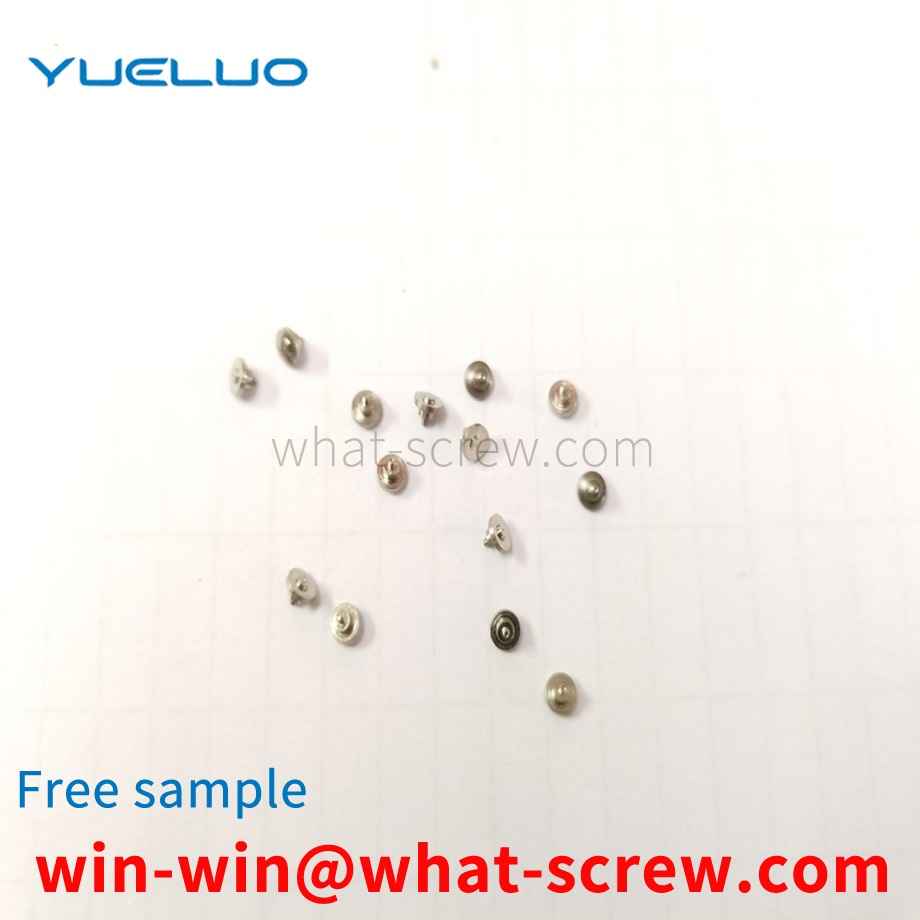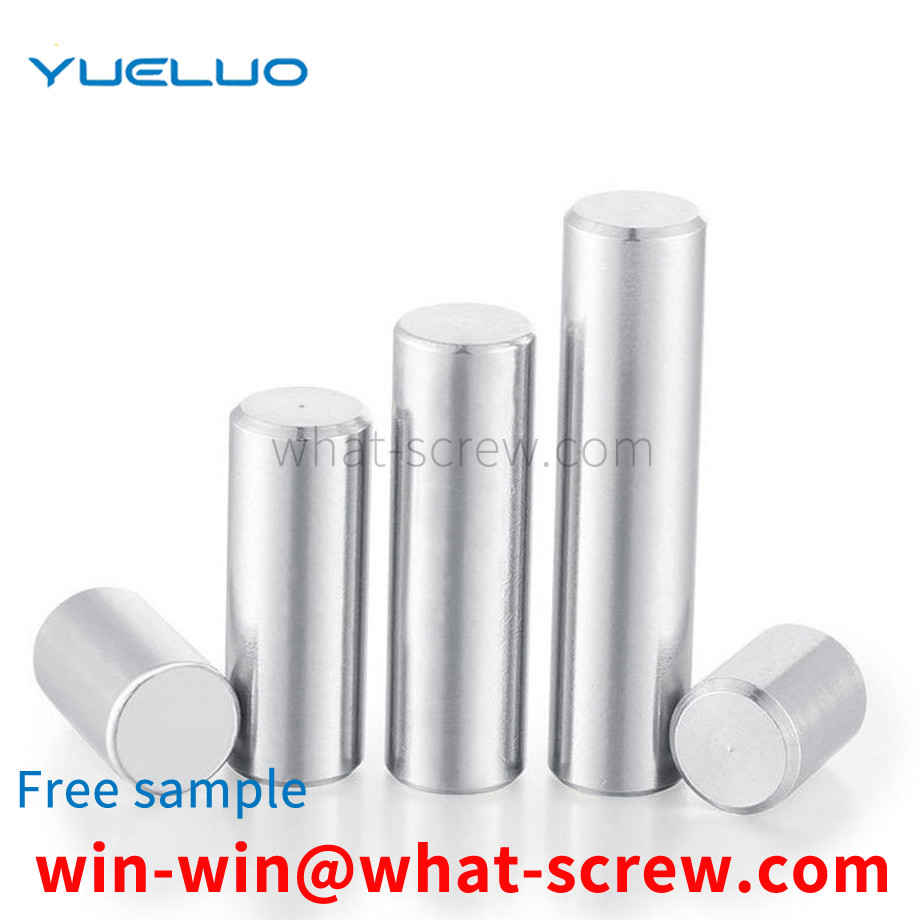Many standoffs are used in sheet metal and aluminum profile processing. However, the existing pressure riveting nut column generally adopts a clearance fit between the pressure riveting and the pressed plate, which has no effect on the general pressure riveting, but it has high surface quality requirements for aluminum profiles, especially Painting aluminum profiles will have a certain impact. First, because the bottom holes of pressure riveting on aluminum profiles are generally processed on ordinary punching machines, a tapered hole with a horn will be generated, which will further increase the gap between the pressure riveting nut columns. Make the mutual tightening force smaller, causing some aluminum profile components to loosen the riveting nut when installing screws, resulting in unqualified surface quality. Therefore, we urgently need a way to reduce the matching gap with the bottom hole of the aluminum profile pressure riveting. The pressure riveting standoff is used to increase the wrapping force between the pressure riveting standoff and the aluminum profile hole.
The quality of electroplating is measured primarily by its corrosion resistance, followed by appearance. Corrosion resistance is to imitate the working environment of the product, set it as the test condition, and perform a corrosion test on it. The quality of electroplating products shall be controlled from the following aspects: 1. Appearance: Partial uncoated, scorched, rough, gray, peeling, crusted, and obvious stripes are not allowed on the surface of the product, and pinholes, pitting, and black plating are not allowed. Slag, loose passivation film, cracks, peeling off and serious passivation marks. 2. Coating thickness: The operating life of fasteners in corrosive atmosphere is proportional to its coating thickness. The general recommended thickness of economical electroplating coating is 0.00015in ~ 0.0005in (4 ~ 12um). Hot-dip galvanizing: the standard average thickness is 54 um (43 um for diameter ≤ 3/8), and the minimum thickness is 43 um (37 um for diameter ≤ 3/8). 3. Coating distribution: With different deposition methods, the aggregation method of the coating on the surface of the fastener is also different. During electroplating, the coating metal is not uniformly deposited on the peripheral edge, and a thicker coating is obtained at the corners. In the threaded portion of the fastener, the thickest coating is located on the thread crest, gradually thinning along the flank of the thread, and the thinnest deposit is at the bottom of the thread, while hot dip galvanizing is just the opposite, the thicker coating is deposited on the inside corners and On the bottom of the thread, mechanical plating tends to deposit the same metal as hot-dip plating, but is smoother and has a much more uniform thickness over the entire surface [3]. 4. Hydrogen embrittlement: During the processing and processing of fasteners, especially in the pickling and alkali washing before plating and the subsequent electroplating process, the surface absorbs hydrogen atoms, and the deposited metal coating then traps hydrogen. When the fastener is tightened, the hydrogen is transferred towards the most stressed parts, causing the pressure to build up beyond the strength of the base metal and producing microscopic surface cracks. Hydrogen is particularly active and quickly seeps into the newly formed fissures. This pressure-rupture-penetration cycle continues until the fastener breaks. Usually occurs within a few hours after the first stress application. To eliminate the threat of hydrogen embrittlement, fasteners are heated and baked as soon as possible after plating to allow hydrogen to seep out of the plating, typically at 375-4000F (176-190C) for 3-24 hours. Since mechanical galvanizing is non-electrolyte, this virtually eliminates the threat of hydrogen embrittlement, which exists in galvanizing using electrochemical methods. In addition, due to engineering standards, it is forbidden to hot-dip galvanize fasteners with hardness higher than HRC35 (Imperial Gr8, metric 10.9 and above). Therefore, hydrogen embrittlement rarely occurs in hot-dip plated fasteners. 5. Adhesion: Cut or pry off with a solid tip and considerable pressure. If, in front of the blade tip, the coating peels off in flakes or skins, exposing the base metal, the adhesion shall be considered insufficient.
The force condition of the screw is broadcasted: 1) Self-weight G; 2) Torque M required to overcome material resistance; 3) Axial force P generated by material pressure. Screw screw screw is generally scrapped due to long-term wear, the gap between the screw and the barrel is too large and cannot be extruded normally, but there are also examples of damage due to improper design or improper operation. Therefore, the screw should also meet certain strength requirements. 4) The dangerous section of the screw is generally at the smallest thread root diameter in the feeding section. According to material mechanics, for plastic materials, the composite stress is calculated by the third strength theory, and its strength conditions are:
Building aluminum alloy formwork is a new type of building formwork, which conforms to the four sections and one environmental protection policy. It is economical, fast, high-quality and environmentally friendly. Its application is of great significance to building energy conservation and environmental protection. The aluminum template is filled with aluminum template pins. However, the pins in the prior art have low connection strength during use, which is likely to cause the hole to be repaired weakly.
Lock nut is a kind of nut widely used in machinery and other industries. Its working principle is self-locking by the friction between the nut and the bolt. However, the reliability of this self-locking is reduced under dynamic loads. In some important occasions, we will take some anti-loosening measures to ensure the reliability of the nut locking.
We have many years of experience in the production and sales of screws, nuts, flat washers, etc. The main products are: nickel-plated crown screws and nuts, boat-shaped marble shrapnel slider nuts, B1058 square welding nuts, copper lug terminals and other products, we can provide you with The right fastener solution for you.



















 Service Hotline
Service Hotline




